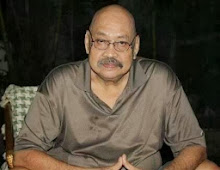Thursday, March 26, 2015
IT is said that all great men play chess. In fact, most US presidents and heads of states including Nobel Peace prize winners, and many achievers play this game when they were still children.
David Shenk said, “We face in our modern, splintered world not only a crisis in education, but more pointedly a crisis of understanding - of thought and of willingness to engage in thought. Thinking tools like chess, help our minds expand, grow comfortable with abstraction and learn to navigate complex systems.”
The first appearance of chess in schools (CIS) was in the Russian Republic of Kalmykia in 1996.
CIS was introduced to the Turkish primary schools as a compulsory subject in 2005 and was made mandatory in the primary schools of Armenia in 2011.
Now, it is part of the curriculum of more than 40 countries, whether it is compulsory or optional. It is only a matter of time before CIS becomes compulsory in the European Union. CIS, in some parts of Eastern Europe and Russia are already in place.
Big countries like China, India and the USA also have their own programs.
After a lot of publicity and excitement, President Gloria Arroyo approved in May 2009 the inclusion of CIS curriculum in primary and secondary schools across the country.
Chess teaches children how to make decisions, trains memory, strengthens will power, motivates children to win, and teaches them how to deal with defeat. It's the only subject in school that can do all of these.
DepEd Secretary Lapus said then. “It is a game that improves organizational and analytical skills. Children, when exposed to this game at an early age, achieve academically better than those who weren’t. Likewise, chess is among the activities that help build memory skills, concentration, self-confidence, self-esteem and in making disciplined decisions. Playing chess provides opportunities to practice values such as perseverance, honesty, and sportsmanship.”
(NCFP) President Prospero Pichay and DepEd Secretary Jesli Lapus signed the Memorandom of Agreement launching the National Chess Academy back then in the presence of PGMA.
Where is it now? I believe that the ball is in Pichay’s hand and he should take the initiative to coordinate with DepEd Secretary brother Armin Luistro and eventually PNoy.
Bro. Luistro is a colleague of another La Sallite brother-NCFP director and former CHED chairman Rolando Dizon-who was instrumental in convincing PGMA about CIS.
I don’t know if PNoy plays chess but his mother certainly did. Most observers rate the 1992 Manila Chess Olympiad as the best ever thanks to the personal attention of Cory and her executive secretary Franklin Drilon.
The Philippines, just after the war, and up until the 1980s, was considered a world power in chess. I recall our child prodigy, the late Rudy Tan Cardoso in a one-on-one match, comprising eight games, with another prodigy Bobby Fischer in 1957, sponsored by Pepsi-Cola in New York. Rudy was the 1st Asian International Master (IM) awarded in 1957.
Eugene Torre became the first GM in Asia in 1974 when most countries in Europe had no GMs. We placed 8th in the Olympiad in Greece in 1988, Now we are 42nd.
The late GM Rosendo Balinas was the only non-Russian to win a major tournament in Russia (Odessa) in 1976.
Other notable players in this period were IMs Rico Mascarinas and Renato Naranja.
We were overtaken by China and India only at the start of the century and now, we are playing second fiddle to Vietnam in Southeast Asia.
In the recent Zonals this month, Vietnam snared the two qualifiers to the World Cup for the Men section and the lone female to the Women Championship Cycle.
Indonesia and lowly Singapore are not far behind. Where goest thou Philippines?
